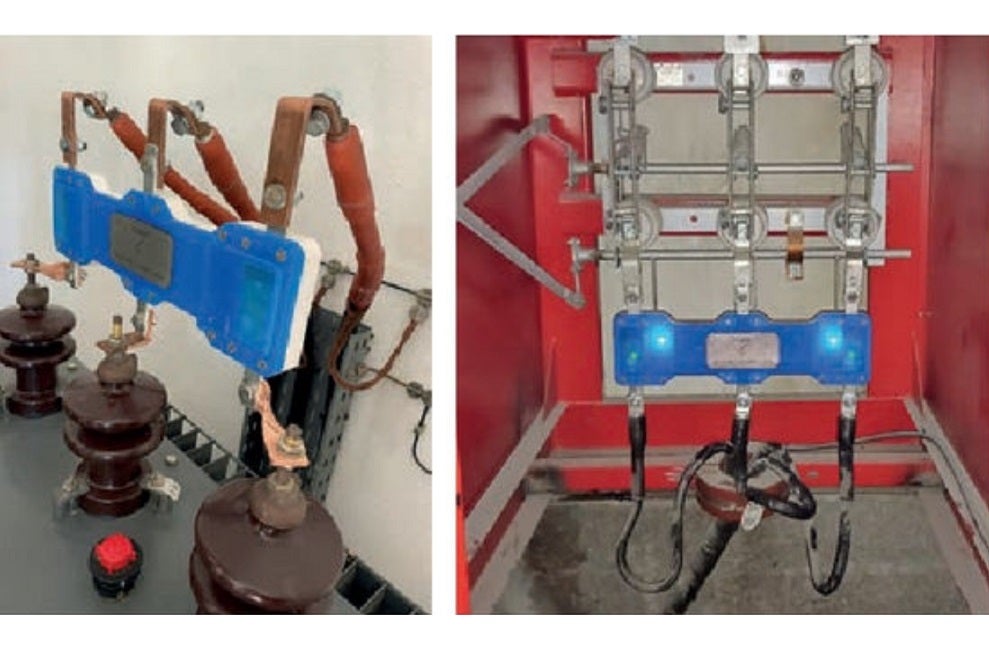
The Soraytec Smart Meter (SSM), directly connectable to medium voltage power lines, provides primary side metering and real-time data streaming for monitoring of voltage and current waveforms in the distribution grid. This gives DSOs visibility of parameters such as network balance, synchronisation, total harmonic distortion and fault localisation.
The system is also capable of phasor monitoring allowing for early detection and efficient isolation of critical events. The SSM is a demonstration of the IoT applied to the grid. Sensors stream data from the distribution networks to a proprietary cloud platform, which uses the data to train algorithms.
The energy transition is introducing new network characteristics that bring additional challenges for distribution system operators (DSOs). Such challenges include electrification of energy demand, intermittency of renewable energy sources and erratic weather events attributable to climate change, coupled with changes in business models such as the rise of prosumers and decentralisation.
These issues have inspired several innovative solutions that make use of data generated in the distribution grids. The majority of these solutions, however, work with low voltages. To enable monitoring of the medium voltage distribution grid requires the costly rollout of smart transformers and auxiliary equipment. This combination of data platforms and multiple sensors leaves operators with a complex and impractical infrastructure.
To close this gap, Soraytec has developed a simple plug and play system to capture all relevant distribution grid data via direct connection to the power lines of medium voltage networks. The vision is: “A fully autonomous, decentralised, self-healing and optimising distribution network”.
The Soraytec Smart Meter achieves this by using a self-powered high-frequency IoT sensor and an edge-computing-enabled data gateway. By facilitating installation directly on the power lines or on the primary sides of legacy equipment, the system obsoletes the requirement for instrumentation transformers and hence cuts installation time from days to minutes.
The short ROI payback time of Soraytec’s technology compares favourably with the excessive cost implications of existing solutions consisting of smart transformers and a large number of sensors.
In addition, direct medium-voltage installation permits simultaneous measurement of all three phases, hence, the system is capable of real-time revenue grade measurements and waveform streaming.
One key advantage of real-time waveforms is access to the data resolution required to operate an autonomous network.
The compact design, ease of installation and plug and play nature of the platform enables operators to install the new meters anywhere in the distribution network and makes it particularly suitable for retrofitting of legacy equipment.
During industrial field trials with distribution network operators in Armenia (Electricity Networks of Armenia), Portugal (E-REDES) and Norway (Kragero Energy), several use cases were tested and validated.
Live network installations validated the accuracy of the Soraytec sensor and network related measurements (eg, power quality, balance and harmonic distortion).
In addition, Soraytec is working with power network demonstration centres to validate and optimise the accurate early-detection and localisation of events such as ground faults. By performing machine learning procedures on measurements of phase angle, frequency, waveforms and homopolar voltage/current stored on the cloud platform, the data gateway is trained, resulting in a fully independently functioning unit capable of carrying out all safety and optimisation related actions (eg, alarms and demand response signals). This creates a decentralised and highly resilient infrastructure for the operator.
As well as use of the Soraytec equipment to directly improve operation, there are also use cases demonstrating improvements at the grid planning phase as well.
Bi-directional measurement and communication enable remote maintenance and a highly flexible grid layout. A highly accurate assessment of network capacity, frequency stability (eg, need for spinning reserve) and distortion levels allows operators to increase the capacity of distributed renewable energy resources connected to the grid. The resulting increase in overall grid capacity due to accurate state assessment and improved efficiency allows operators to plan the installation of new power lines in response to increased demand (for example) in a more flexible and less time constrained manner.
In addition, Soraytec’s technology is an attractive option for micro grids with medium voltage lines. The focus on continuity of supply at the highest possible efficiency helps increase network capacity. This in return allows operators to save CAPEX and OPEX due to reduced complexity with a higher automation level. For micro grids, Soraytec’s technology is highly cost effective and eliminates the need for a SCADA system.
This article first appeared in Modern Power Systems magazine.






